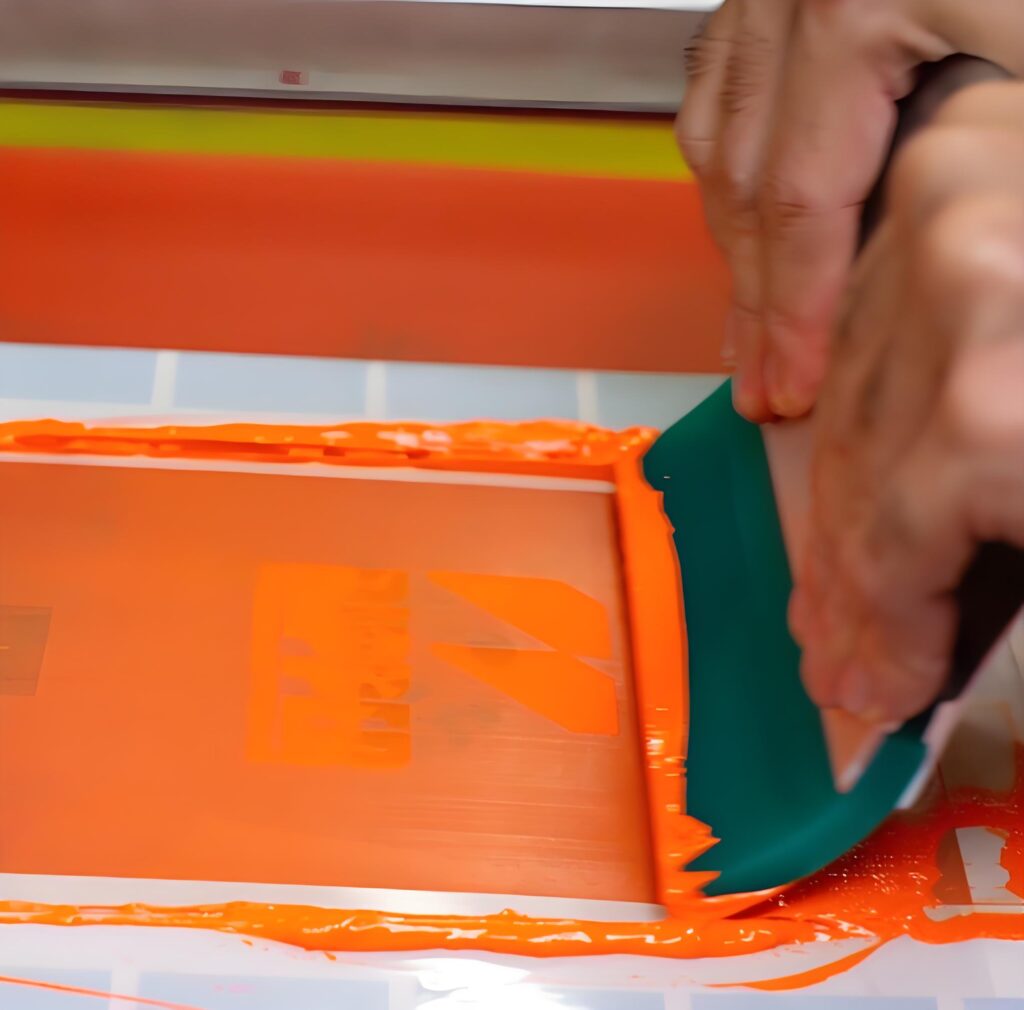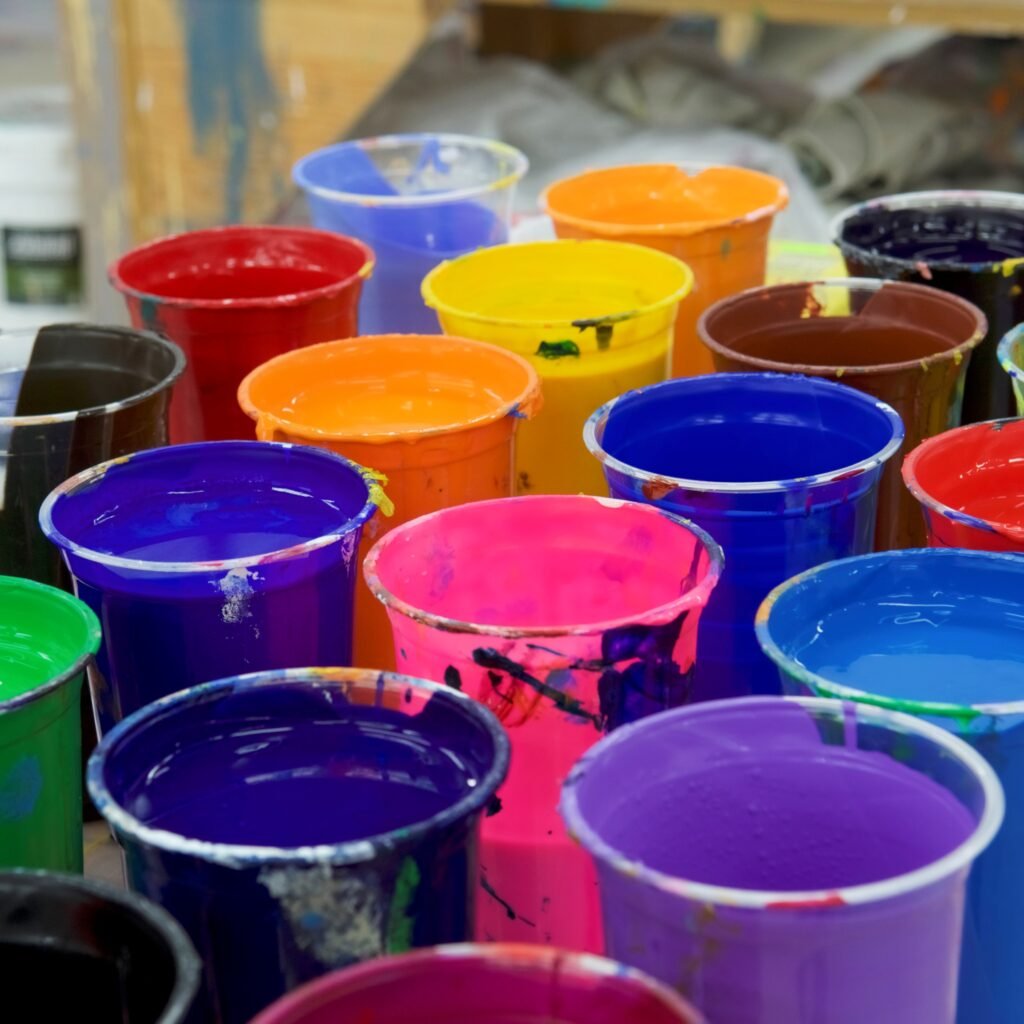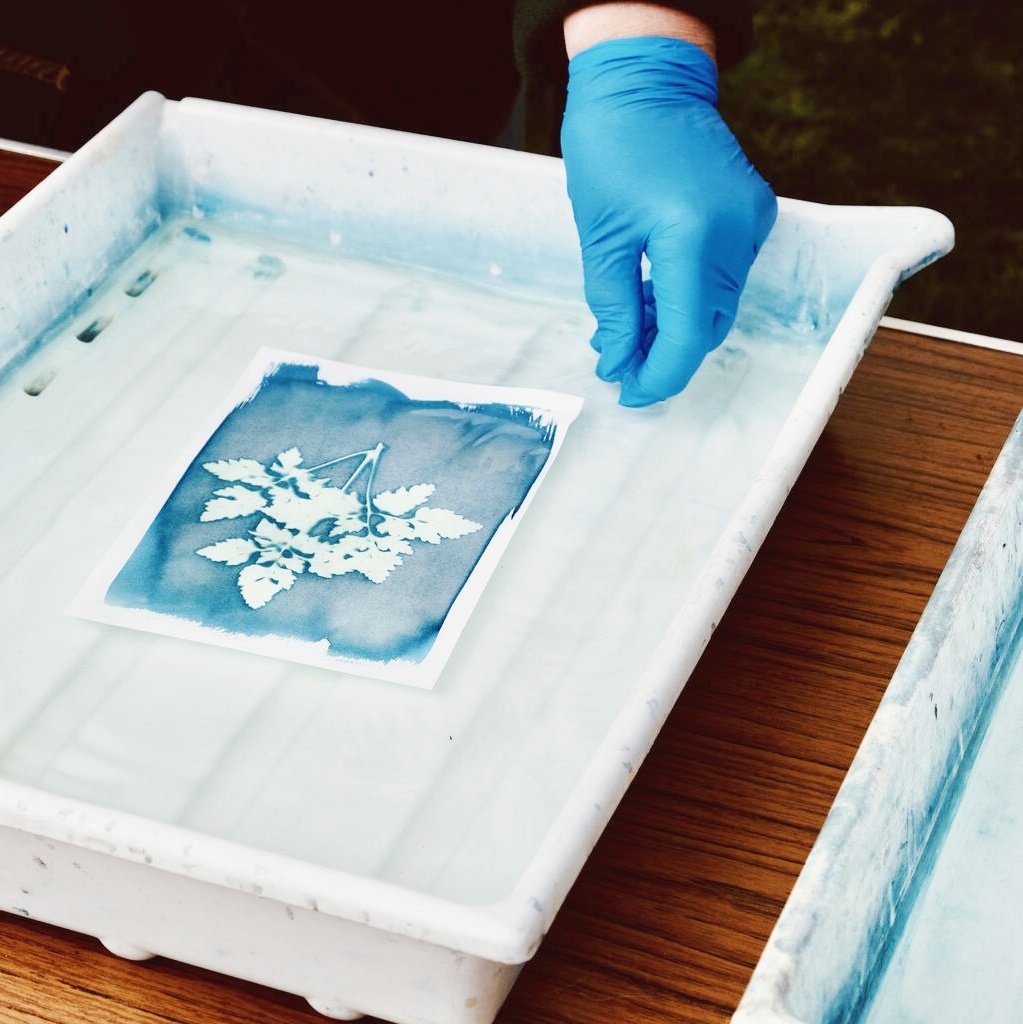¡Prepárate para llevar tu experiencia de impresión al siguiente nivel! Esta publicación profundiza en el fascinante mundo de la tinta, CMYK, plastisol y la impresión por procedimientos. Si alguna vez te has preguntado cómo tus camisetas favoritas consiguen esas impresiones vibrantes y fotorrealistas, o qué ofrece a los artistas de serigrafía un control tan preciso sobre el color y el tono, estás en el lugar indicado. Desvelaremos los secretos de los colores por procedimientos, la tecnología que sustenta la tinta plastisol CMYK y compartiremos consejos de expertos para obtener los mejores resultados, ya sea que imprimas sobre algodón, poliéster o cualquier otro material. Si buscas impresiones brillantes y precisas y una técnica de alta calidad, no te puedes perder este manual.
Tabla de contenido
1. ¿Qué es la tinta plastisol? Todo lo que necesitas saber sobre la tinta para serigrafía
La tinta plastisol es una estrella en el mundo de la serigrafía. A diferencia de las alternativas a base de agua, la tinta plastisol se deposita sobre el material, ofreciendo a los serigrafistas una opacidad superior y un color increíblemente saturado. Lo que hace que el plastisol sea ideal para esta técnica es su versatilidad: se puede usar en una amplia variedad de prendas y es especialmente popular para camisetas y sudaderas.
Con el plastisol, obtienes más que solo tinta; obtienes una película duradera y flexible que no se seca dentro de la pantalla. Es fácil de aplicar, se puede tratar a bajas temperaturas con una prensa térmica y se adapta bien a diversas densidades de malla. Esto significa menos dolores de cabeza y más tiempo dedicado a la impresión creativa.
Lo mejor de todo es que la tinta plastisol está disponible tanto en colores directos generales como en tintas de cuatricromía (incluidos todos los colores principales para CMYK). Esta flexibilidad garantiza que, tanto si busca una marca sencilla como una imagen fotorrealista, la tinta plastisol está a la altura.
2.¿Por qué es tan importante CMYK en el proceso de color de serigrafía?
CMYK es la base del sistema de 4 colores, una técnica de impresión que permite recrear imágenes a todo color utilizando únicamente cian, magenta, amarillo y negro. En serigrafía, el uso de tintas CMYK, principalmente tinta plastisol CMYK, permite transformar una mezcla de colores básicos simples en impresiones complejas y de alta calidad.
¿Por qué no usar tonos premezclados? La respuesta se reduce a la reproducción del color y el detalle. El sistema CMYK permite a los impresores crear degradados, sombras y transiciones difusas: detalles que jamás lograrías con unos pocos colores planos. Así que, cuando veas una blusa con una fotografía a todo color o una ilustración compleja, probablemente estés presenciando la magia de la impresión en cuatricromía CMYK.
Además de eso, CMYK es fundamental para la eficiencia, ya que reduce el stock de tinta (porque no se necesitan contenedores separados para cada tono) y facilita la combinación y entrega de colores.
3. ¿Cómo funciona el proceso de cuatro colores (CMYK)?
La técnica de cuatro tonos descompone cualquier imagen en cuatro monitores separados, uno para cada tinta CMYK. Cada capa se imprime como una muestra de diminutos puntos de semitono. Cuando estos puntos se superponen, se combinan, creando la ilusión de transiciones de color suaves y una fotografía a todo color.
El proceso comienza con la separación de la ilustración, donde impresores expertos separan el documento en capas de cian, magenta, amarillo y negro (CMYK negro de proceso). A continuación, cada separación se transfiere a una pantalla de malla, preparada para el entintado.
Durante la impresión, cada serigrafía imprime su tinta respectiva con un registro perfecto sobre la tela. El control preciso de la aplicación de la tinta, el número de mallas y los ajustes de la prensa es crucial para obtener resultados vibrantes y precisos. En definitiva, la impresión final puede mostrar detalles e intensidad que rivalizan con la impresión digital.
4. ¿Cómo se utilizan el cian, el magenta, el amarillo y el negro en la impresión con plastisol?

Cada uno de los 4 colores del proceso desempeña una función completamente única:
- El cian es un azul maravilloso que sienta las bases para los tonos del cielo y las verduras brillantes.
- El magenta aporta riqueza a los rojos, rosas y púrpuras.
- El amarillo aporta calidez: piense en la luz del sol o en reflejos vibrantes.
- El negro (sistema negro) aporta intensidad, sombra y contraste, embelleciendo la fotografía final.
En la tinta plastisol CMYK, cada color está formulado para una transparencia y una intensidad óptimas. La impresora controla cuidadosamente la opacidad para que los colores se mezclen como puntos de semitono, lo que resulta en degradados uniformes y colores naturales. ¡Conseguir los tonos perfectos es crucial para imprimir imágenes vibrantes y que destaquen!
Tanto la tinta plastisol triangular como otras marcas se centran en la pureza y consistencia de esos colorantes, lo que las convierte en una opción confiable para tareas preocupantes.
5. ¿Qué hace que el Plastisol Negro de Proceso sea diferente del Plastisol Negro Regular?
El negro es mucho más de lo que se ve a simple vista. Procesar el negro (dentro del... Técnica CMYK) no es similar al plastisol negro de moda que se usa para impresiones puntuales. El negro de proceso está formulado para ser transparente y combinarse armoniosamente con otros tonos de proceso, en lugar de opacarlos.
¿Por qué no usar tinta negra profunda y opaca? Esto puede emborronar la foto, opacar la información sensible o dificultar la comprensión de las capas subyacentes de color. El negro de cuatricromía permite mantener un sombreado sutil y una evaluación en impresiones a todo color, lo que resulta en una impresión final realista y equilibrada. El amarillo le da mayor impacto. Sin embargo, para la mayoría de los trabajos con plastisol de cuatricromía, el negro de cuatricromía CMYK es la mejor herramienta para lograr sombras limpias y detalladas.
6. ¿Cuál es el proceso para mezclar y suministrar tintas plastisol?
Una mezcla de tintas uniforme y precisa es vital para una reproducción de color de primera calidad. La mayoría de las tiendas utilizan tintas técnicas precombinadas o combinan cuidadosamente sus propios lotes, siguiendo las fórmulas del proveedor.
El suministro de tinta plastisol para impresoras de display implica la presentación de conjuntos de tintas técnicas (cian, magenta, amarillo, negro), además de tintas especiales y aditivos especializados, incluyendo aquellos para un tacto suave o efectos especiales. Empresas de distribución de renombre le guiarán en la selección de tintas según su prenda, técnica de impresión y acabado deseado.
Para la mayoría de las duraciones de almacenamiento, guarde siempre el plastisol en un lugar fresco y seco. Consulte las fichas técnicas de su proveedor para obtener información sobre el curado de la tinta, los grosores de malla adecuados y las opciones de aditivos.
7.¿Cómo afecta el proceso de serigrafía al color de la impresión final?
Cada aspecto del proceso de serigrafía afecta la impresión final:
Los recuentos de malla deciden cuánta tinta pasa a través de la pantalla y, a su vez, qué tan agradables se ven los datos de medios tonos.
La tensión en la malla afecta el cambio de tinta y la alineación.
La tensión y la perspectiva de la escobilla de goma controlan la aplicación de la tinta, lo que influye en la saturación y la claridad del color.
Para impresiones fotorrealistas, los impresores suelen optar por mallas más finas (p. ej., 305-355) para conservar los diminutos puntos de semitono sin saturar la imagen. La prensa debe tener un registro óptimo; si la trama se mueve, los colores no se alinearán y la impresión se verá borrosa. El uso de una prensa de calor o un secador de cinta fija el color y el acabado, garantizando su durabilidad lavado tras lavado.
8. ¿Qué recuentos de malla, configuraciones de prensa y aditivos debería utilizar para la impresión CMYK?
La impresión en cuatricromía se centra en la estabilidad y la precisión. Se suelen utilizar mallas finas (de 305 a 355 hilos por pulgada) para crear medios tonos nítidos sin sobrecargar la tinta. Una malla gruesa puede saturar la prenda y hacer que las fotos se vean borrosas, mientras que una malla de alta calidad garantiza que cada punto de tinta caiga donde debe.
Es necesario ajustar correctamente la configuración de la prensa (velocidad de inundación/recorrido, fuera de contacto y tensión de la escobilla de goma). Demasiada tensión o tinta puede distorsionar la imagen; muy poca y puede pasar por alto detalles u obtener un color manchado.
Los aditivos pueden modificar el rendimiento de la tinta: los componentes suaves al tacto reducen el espesor del plastisol para una textura más suave y similar a la del material. Siempre revise las nuevas mezclas antes de comenzar una tirada completa de producción.
9. ¿Cómo lograr una textura suave y una imagen vibrante en las prendas?
A todos nos encanta una impresión que se siente tan bien como se ve. Lograr un tacto suave con tinta plastisol solía ser complicado, pero las estructuras de tinta actuales y los aditivos para tacto suave lo hacen limpio. Un control minucioso del grosor de la tinta, la densidad de la malla y la temperatura de curado garantiza un acabado que parece parte del material, no una calcomanía aplicada sobre la superficie.
Para obtener resultados vibrantes, es necesario controlar cada paso: comience con pantallas lisas y tensas. Si es necesario, utilice una base blanca. La selección correcta de tinta, especialmente un juego de tintas de cuatricromía de alta calidad, puede dar vida a las imágenes con colores y nitidez impresionantes.
10. Solución de problemas comunes en la serigrafía con plastisol en color
Incluso con el dispositivo y la tinta tan agradables, las cosas pueden salir mal:
- Las impresiones borrosas generalmente implican que sus pantallas o prensas no están registradas. ¡Revise las alineaciones!
- ¿Colores turbios? La malla se contabilizará o la capa de tinta probablemente sea demasiado gruesa; reduzca la acumulación de tinta y asegúrese de que los medios tonos no se fusionen.
- Las imágenes deslavadas suelen ser el resultado de una cantidad insuficiente de tinta o de una base blanca inadecuada al imprimir sobre ropa oscura.
Una impresión final que se agrieta o se decolora después de un lavado suele indicar un curado insuficiente. Asegúrese de tratarla a las temperaturas recomendadas; para el plastisol, suele ser de 160 a 175 °C.
¡Con la técnica y el equipo adecuados y una increíble entrega de tintas increíbles, se pueden evitar la mayoría de los problemas antes de que comiencen!
Conclusiones clave
- La tinta plastisol es el producto general de la industria de la impresión para lograr serigrafías vibrantes y duraderas.
- CMYK y el sistema de cuatro tonos permiten obtener imágenes fotorrealistas con tonos completos a partir de solo cuatro colores primarios.
- La separación cuidadosa, la preparación de la pantalla y el recuento de mallas son importantes para la duplicación de color.
- El negro de proceso se diferencia del plastisol negro preferido en su transparencia y capacidad de mezcla.
- Utilice componentes manuales suaves y un curado adecuado para lograr impresiones que se sientan suaves y duren mucho tiempo.
- Una base blanca permite que las fotografías resalten en prendas oscuras.
- Seleccione siempre recursos de entrega excepcionales para obtener tinta constante y ayuda del sistema.
- Solucione problemas de impresiones borrosas o turbias con la ayuda del ajuste de la configuración de registro, tinta y malla.
- Dominar el procedimiento de impresión hace que sus impresiones se destaquen, ya sea un impresor nuevo o un profesional.
- ¡Experimente, estudie y encarne el arte del procedimiento de color plastisol para obtener resultados de serigrafía sobresalientes!
Siguiendo las técnicas y consejos descritos anteriormente, su tinta, color y técnica de impresión siempre producirán resultados hermosos. ¡Mantén la curiosidad, sigue experimentando y deja que tu arte brille!



